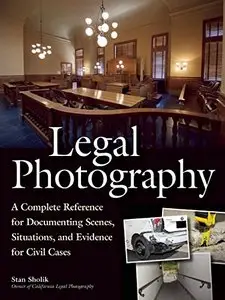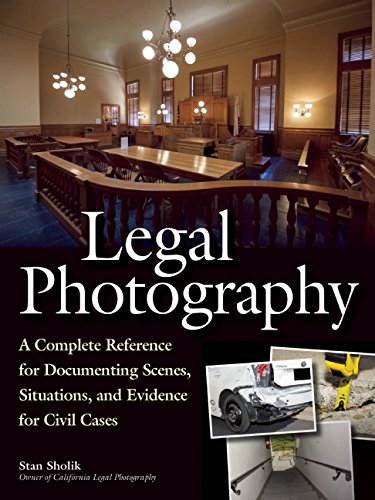Legal Photography: A Complete Reference for Documenting Scenes, Situations, and Evidence for Civil Cases by Stan Sholik
English | Mar 17, 2015 | ISBN: 1608958590 | 128 Pages | EPUB/MOBI/AZW3/PDF (Converted) | 19 MB
English | Mar 17, 2015 | ISBN: 1608958590 | 128 Pages | EPUB/MOBI/AZW3/PDF (Converted) | 19 MB
While the number of assignments available in many photographic specialties is decreasing, there are still relatively untapped growth areas for still photographers and videographers. One of these specialty fields is legal photography.
Legal photography involves working closely with lawyers in law firms to provide photographic or video documentation relevant to their civil, not criminal, cases. It can involve a range of other photographic specialties from macro photography to architectural photography. No matter what is involved in a legal photography assignment, it is generally interesting and presents a new, unique set of problems to solve. Legal photography is far more technical than creative, but it is also in demand and is financially rewarding.
Civil cases brought to arbitration or jury trial range from simple to complex. Common to all cases is the need to present evidence in a fair and accurate manner. In this book, readers will learn how to take responsibility for ensuring that the images captured and delivered for presentation are a “fair and accurate representation” of the observed scene. That responsibility begins with the choice and use of the proper equipment (e.g., camera type, sensor size, capture mode, the correct focal-length lens for the job), through the techniques used during image capture (exposure, lighting, camera angle, camera-to-subject distance, white balance, etc.), to the processing of the captures for output. Sholik also points out that documentation is required for each step to ensure all parties that the representation is indeed fair and accurate—and the details of how this can be accomplished are outlined in this book as well.
Also covered is information about how to proceed should you be asked to give testimony as to the accuracy of your work and information about the requirements to be deemed an “expert witness.” For most photographers, doing assignments in the field of legal photography is the easy part. Getting the assignments can be more of a challenge, so the process of marketing yourself as a legal photographer is covered.



